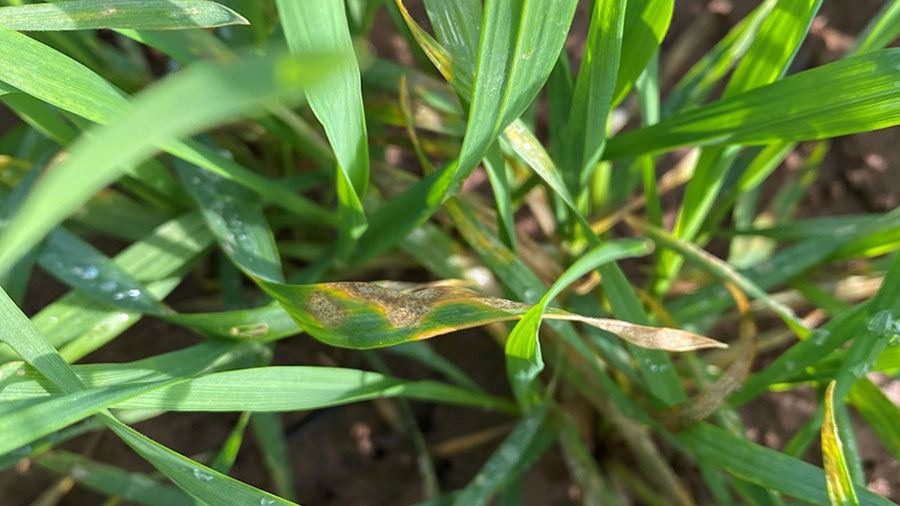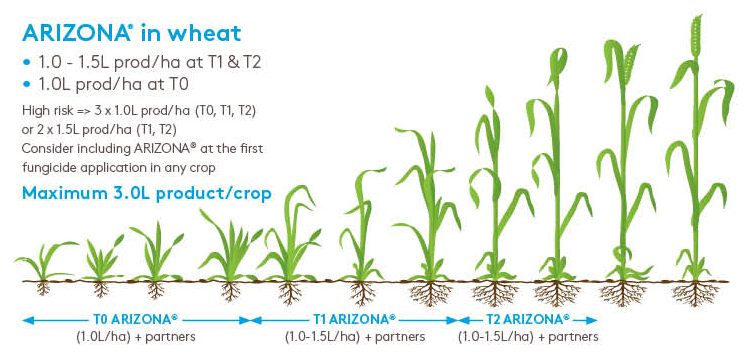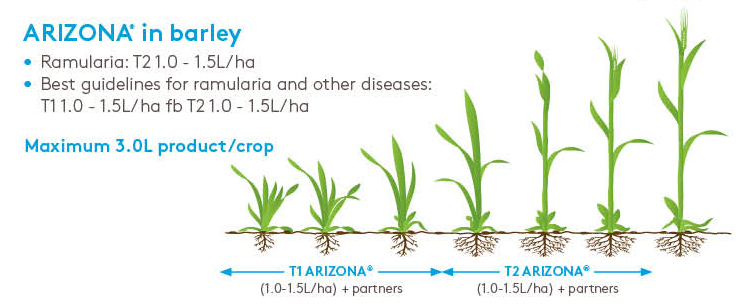Advertiser content
Fungicides: Boost disease control and protect your programme
 © ADAMA
© ADAMA Disease control
Following the exceptionally wet winter, there is a significant amount of disease already present in those winter cereals which established well and have survived the winter successfully.
Without knowing how the spring will unfold, it’s impossible to predict with any level of certainty how much disease pressure spring-drilled crops will face.
But it’s safe to say that crops in both camps (winter or spring drilled) will need a carefully considered fungicide programme to ensure they go on to achieve their true yield and quality potential.
No matter how your crops have fared over the winter, disease prevention programmes should be implemented as soon as the first new growth emerges, and before any significant infections have taken hold.
Disease pressures, variety resistance rating and weather conditions should all be taken into consideration when formulating a suitable fungicide programme, with the threat of infection assessed on a field-by-field basis to ensure all crops receive adequate protection.
Resistance management
With a number of fungicide active ingredients showing signs of reduced efficacy, it is important to remain mindful of resistance management when deciding which fungicides to apply.
The golden rule is to inspect crops regularly to assess the ongoing level of threat, and to limit the exposure of at-risk chemistries by only applying fungicides where necessary.
Each fungicide should be used in combination with an alternative and compatible active ingredient(s), and each active ingredient should be used as few times as possible.
To further increase the diversity of fungicide programmes and to protect the current and future armoury of fungicides, a range of modes of action should be used in mixture and alternated throughout the season.
For example, ADAMA’s multi-site active ingredient, folpet (ARIZONA®) should be used alongside single site active ingredients to protect the azole, SDHI and strobilurin groups from further erosion of efficacy.
Principles of resistance management:
- Where available, make use of disease-resistant varieties.
- Use crop rotation to avoid the build-up of soil-borne and trash-borne pathogens.
- Use fungicides appropriately: use the minimum effective dose and avoid repeated applications of fungicides from the same mode of action group.
- Alternate applications of fungicides from different groups
- Use fungicides with a multi-site mode of action, which are less prone to fungicide resistance problems.
The role of a multi-site in cereal programmes
Fungicides that have multisite modes of action are at lower risk of resistance and have no recorded instances of resistance in cereal foliar diseases. Multisites can be used as a cost-effective mixture partner to protect higher-risk single site-acting fungicides at each application timing.
ARIZONA (Folpet 500g/l) acts on multiple bio-chemical pathways within the fungal cell making it less susceptible to resistance:
- Spore germination inhibitor
- Cell division inhibitor (interferes with nuclear protein synthesis)
- Reduces energy production (disrupts electron transport in mitochondrial respiration)
Folpet is recognised by the Fungicides Resistance Action Group (FRAG-UK) as a valuable tool for managing resistance thanks to its ability to provide added levels and spectrum of disease control which can protect and prolong the lifespan of medium to high resistance risk fungicides like SDHIs.
How to maximise the benefits of ARIZONA in a programme
Multi-site efficacy and value
ARIZONA® (folpet 500 g/l) is a unique multi-site fungicide that provides valuable additional protection against key diseases in wheat and barley.
It also delivers a reliable return on investment through enhanced disease control, as well as safeguarding the efficacy of partner products as part of an anti-resistance strategy.
Including ARIZONA (folpet 500 g/l) as part of a programme of fungicides gives the following benefits:
- ARIZONA enhances disease control by providing additional activity against septoria in wheat, and ramularia, net blotch and rhynchosporium in barley. ARIZONA also provides a useful reduction of yellow and brown rusts, as well as intrinsic activity against mildew.
- ARIZONA delivers a reliable return on investment by extending green leaf area duration. This directly translates into higher yields and enhanced crop quality, with every £1 spent on ARIZONA providing a £4 return on investment.
- ARIZONA’s unique folpet multi-site mode of action makes it the only fungicide which has been proven to extend the effective lifetime of at-risk fungicides by delaying the development of resistance.
- In 224 trial comparisons looking at yield benefit, when ARIZONA is added to a base programme the average yield benefit was = 0.28 t/ha.
‘Every £1 spent on ARIZONA will provide a £4 return on investment.’
(Based on 224 trials carried out from 2019 to 2023. Based on wheat at £200/tonne.)
When to use ARIZONA in wheat
In wheat, T1 is the priority timing for the control of septoria. Using ARIZONA at this timing will provide a positive yield response and reliable return on investment.
For the best results, a second application at T2 will further enhance disease control and protect partner chemistries.
In higher risk situations (e.g. a susceptible variety facing high disease pressure), ARIZONA should also be included at T0 to provide early season protection before diseases take hold.

When to use ARIZONA in barley
In barley, T2 is the key timing in any scenario, especially for the control of ramularia.
ARIZONA can also be used at T1 when its inclusion will provide added protection against rhynchosporium, or at T0 it the season dictates that early protection is required.
To achieve the best control of both diseases, ARIZONA should be included at T1 and T2.

Take the quiz and earn Basis points
This article is part of a three-part course brought to you by ADAMA. You can read the full course and take the quiz to gain Basis points in our Learning Centre.
Provided by
ADAMA is a leading manufacturer and distributor of crop-protection solutions. With a heritage of nearly 70 years and over 4500 employees in more than 120 countries, ADAMA has world-leading expertise in a range of product categories including a full range of fungicides, herbicides, insecticides, plant growth regulators and molluscicides.
ADAMA’s crop protection products are available in the UK through leading agro-chemical distributors and agronomy companies.
Technical helpline 01635-876-622
